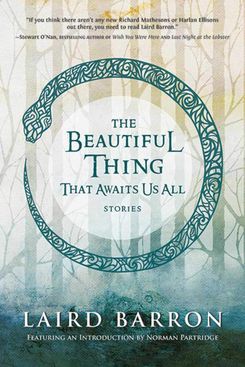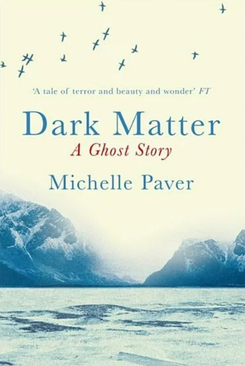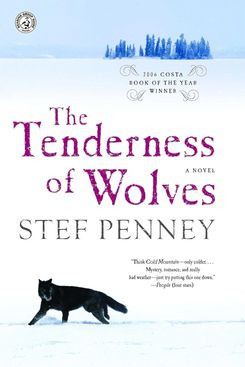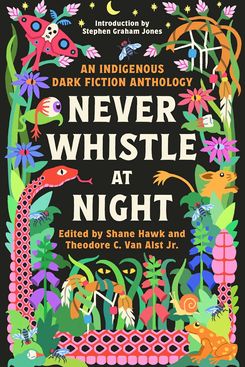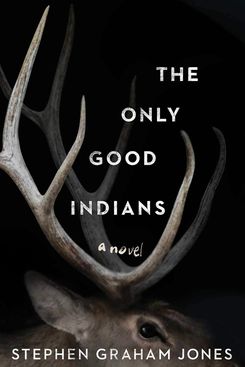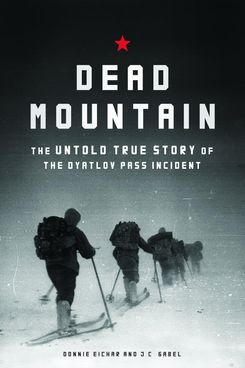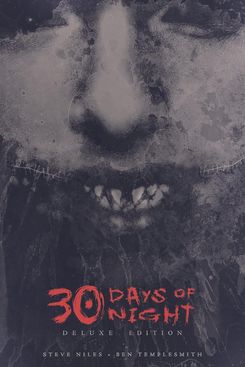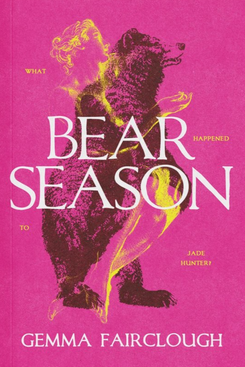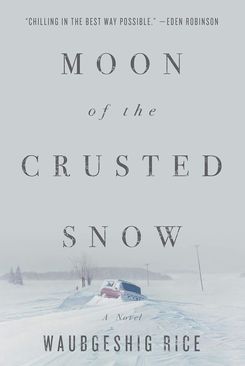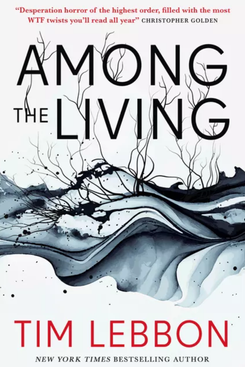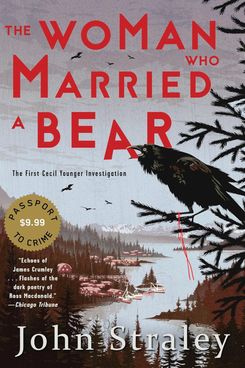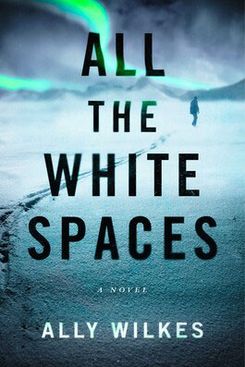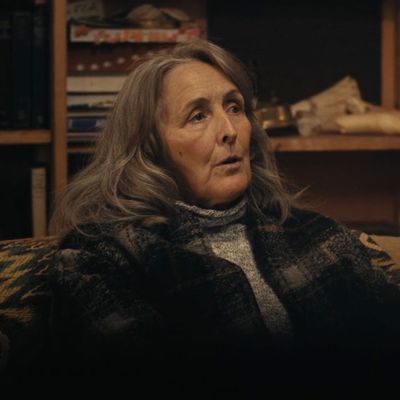
Night Country has brought True Detective back from the brink. Like a microbial terror unearthed from the Arctic permafrost, the show has reawakened with fresh urgency under the creative leadership of writer and director Issa Lopez. Setting is a big part of the energy injection, with the series relocating from southern, sunbaked scenes-of-the-crime to Ennis, Alaska, a town shrouded in polar night. It’s a fitting stage for Lopez’s baroque horrors (corpsicle, anyone?), but it’s also ripe with environmental threat and the hint of cosmic terror.
That outer weirdness is also where Lopez recaptures so much of what made season one a pinnacle of prestige TV. Night Country evokes the same off-kilter tonality; it pursues the same philosophical tug-of-war between nihilism and tired idealism; it poses the same implication of something otherworldly lurking behind the human atrocity.
And, just like that first season, it’s literary as hell. Season one was heavily indebted to the weird mythologies of Ambrose Bierce and Robert W. Chambers. Night Country spirals back to that same lore, but also includes subtle references to Cormac McCarthy’s Blood Meridian, The Exorcist, and Virgina Woolf, among others.
So if you’re lamenting the end of this winter’s best television, have no fear: here are a dozen books to help preserve its dark, icy spell.
Laird Barron may now write his stories from the safe haven of upstate New York, but he spent his boyhood in Alaska. That frozen, frontier mind-set underpins much of his work, which ranks among the absolute top tier of modern cosmic horror. He is one of few true heirs to the fiction writers that inspired True Detective, complete with his own loosely assembled mythos. Any Barron collection would be a fitting companion to Night Country, but The Beautiful Thing That Awaits Us All is his most acclaimed. Tales like “Blackwoods Baby,” “The Carrion Gods in Their Heaven,” and “The Men From Porlock” evoke a backwoods nightmare-scape of human brutality with roots in old gods and ancient rites. No contemporary writer is quite so adept at melding the noirish and the weird. One of these days, they will have to base a season of True Detective on a Barron story.
The oppressive polar dark is put to such good use in Night Country that it makes you wonder why more scary stories don’t use it. Part of the reason may be because Michelle Paver has made it her own. Dark Matter is an Edwardian ghost story with an unbeatable conceit. What if you were alone in the Arctic and your only place of refuge was haunted? Paver squeezes every drop of anxiety from this premise, with a Poe-like focus on the pressure of solitude. Is there a ghost, or is the protagonist going mad in his loneliness? In the end, it barely matters: The dark and the cold are their own presence, proof enough of the region’s animosity toward the living.
Stef Penney’s prize-winning novel is an historical mystery set in the wilds of 1860s Canada. When the body of a trapper is found with a cut throat and scalped head, it brings together a number of invested parties, and raises the spectre of past disappearances out in the cold. It’s a book of journeys through an inhospitable landscape, and though the characters are interesting, it’s Penney’s grasp of the hostile world that really sings. This is doubly, triply impressive because the author wrote the book from a warm seat in the British Library. Agoraphobia meant she was unable to travel to Canada for on-site research. I suspect that, rather than hindering Penney’s imagination, her terror of wide-open places is a big part of why this book works so well.
One of the smartest choices Issa Lopez made in Night Country was to make the Indigenous population of Ennis, Alaska, so central to the narrative. The protesters’ cries that “we were here first” pointed to more than just industrial and ecological unrest. There are millennia of history and mystery that predate the arrival of the Tuttle empire, sediments of knowledge and belief that (final revelations notwithstanding) appear firmly interwoven with whatever the hell is going on. All of this is to say that your post–Night Country reading should feature some Indigenous voices, and Never Whistle at Night is a fantastic place to start. It’s a rich stew from some of the best Native writers currently working in the field. Stories range from the folkloric to the gritty and urban, but bonus points to the opener, Mathilda Zeller’s “Kushtuka,” which takes us straight back to Alaska for a nightmarish tale of monsters calling the unwary out into the snow.
Characters in Night Country keep saying “She’s awake.” I have no idea who or what they’re referring to yet, but every time I hear it, I think of the Elk-Headed Woman that prowls through The Only Good Indians. She’s a terrifying monster, ruthlessly hunting and haunting the four protagonists as punishment for the sins of their youth. Come to think of it, I hope she is in the show! Indians was the breakout book for Stephen Graham Jones, the foremost figure in the Native American horror boom. It’s slippery and unexpected and shares a lot of Night Country’s juxtapositions — industrial versus rural, traditional versus modern, the odd versus the everyday. On top of that, it’s just a great story with one of the craziest climactic showdowns you’ll ever read. I only hope Issa Lopez is as daring in her conclusion.
For all that I’ve stressed the show’s literary references, its greatest inspiration is in a stranger-than-fiction story about young Soviet hikers who suffered an unexplained fate in the Ural Mountains back in 1959. Think missing tongues, irradiated corpses, cursed mountains, and lights in the sky. It’s enough for a week of Wiki-hole burrowing, but Donnie Eichar’s investigative account is easily the best place to start. It’s one of those nonfiction books that genuinely reads like a thriller, filled with newly released case documents and transcripts of the victim’s own diaries. We may never know what happened to those poor hikers, but Dead Mountain lays out all of the possible scenarios and leaves you with the sense that there are things about the wilderness that should remain unexplained.
Every winter, the town of Barrow is plunged into a monthlong night. What does any thinking horror writer do with that scenario? They add vampires! It’s a concept so blatantly brilliant that it makes said horror writers slap their foreheads and seethe, “How did I not think of that?” In this graphic novel, the fight between invading vamps and the everyday heroes becomes an apocalyptic showdown in microcosm. The story has since expanded with numerous spin-offs and continuations, but the original three-episode run is now collected in a single volume. Fans of graphic novels know this is a classic, but if you haven’t ventured beyond prose before, it’s a wonderful place to start.
Bear Season’s publicity team must have been thrilled with their timing. Set to be released only days after the final episode airs, Fairclough’s book is here to tick boxes for anyone wanting more unexplained Alaskan shenanigans. When a British student goes missing during an academic trip to Anchorage, the mystery spawns a whole industry of speculation. Bear Season is presented as a faux-investigative answer, piecing together theories and evidence as to what befell the missing Jade and the truth about the woman who is convicted of her murder. It’s a slight yet complex novella: half pseudo-academic theory, half Angela Carter–esque tale of feminine transformation, wholly unique.
Fictional apocalypses tend to be very pale. When the shit hits the fan, it’s generally white people who wander the ruins of empire, wondering where all the Starbucks went. In Moon of the Crusted Snow, Waubgeshig Rice ponders a double question: How would a remote Native community cope in the end times, and after centuries of very real death and displacement … would they even notice? It’s a grim novel — not a million miles in tone from Cormac McCarthy’s The Road — and Rice tells his story in an unadorned style befitting the cruelty and cold. If, like me, you watched Night Country and worried over how easily Ennis could be cut off by a downed phone line or blocked road, Moon of the Crusted Snow will give you a twitch. It’s a book centred on isolation, the persistent doubt that the world even exists beyond the nearest snowy horizon.
The mutated fingerprints of John Carpenter’s The Thing are all over Night Country and its dead scientists. Tim Lebbon’s new novel is poised perfectly between that paleobiological nightmare and Night Country’s environmental conspiracy. On a remote Arctic island, rare-mineral excavators release a pathogen from the ice that transforms the infected into … well, let’s just say zombies. It’s more complex than that, but you know the drill. What follows is a race against time and geography to contain the virus and survive. In tone and pace, Among the Living it couldn’t be more of a departure from Night Country’s brooding dread; once this book revs up, it barely touches the breaks. But if Ennis’s ecological battle stoked your despair about our disregard for the planet, Lebbon will give you a much grislier reason to be afraid.
The Alaska of John Straley’s long-running Cecil Younger Mysteries is full of distinct character; barrooms erupt into regular fistfights, old crimes lie unresolved, and hints of an older tradition thrum behind everything. You can see why I thought of it for this list. Where Straley’s work differs is in its dark whimsy and sunnier good humor. In this, the first of the series, Straley’s newly sober PI is engaged by an elderly Tinglit woman who refuses to allow her son’s murder to become a cold case. What follows is an inadvertent road trip across Alaska in pursuit of the truth. The investigative procedural seems an oddly clinical way to depict a place as grand as Alaska, but between the crimes and the corruption, Straley smuggles in a sense of state as a place that’s lived in, not just looked at.
So far, we’ve kept heading north. Ally Wilkes takes us down to the southernmost reaches of the Earth for a showdown with a truly inexplicable evil. All the White Spaces is a period piece aboard an Antarctic expedition, in the waning years of the age of exploration. What her beleaguered characters find down there is kept almost wholly veiled, but it exerts its pull on them in insidious ways, drawing them out into the ice, fracturing their fragile morale. Wilkes’s choice to tell her story through the eyes of a trans man is an interesting twist on chauvinistic colonial expedition — just as Issa Lopez has unpicked the machismo of detective fiction through her central female pairing. This one shares Night Country’s elusiveness and its grit, driving home both the spiritual terror and the very bodily horror of the long cold.
